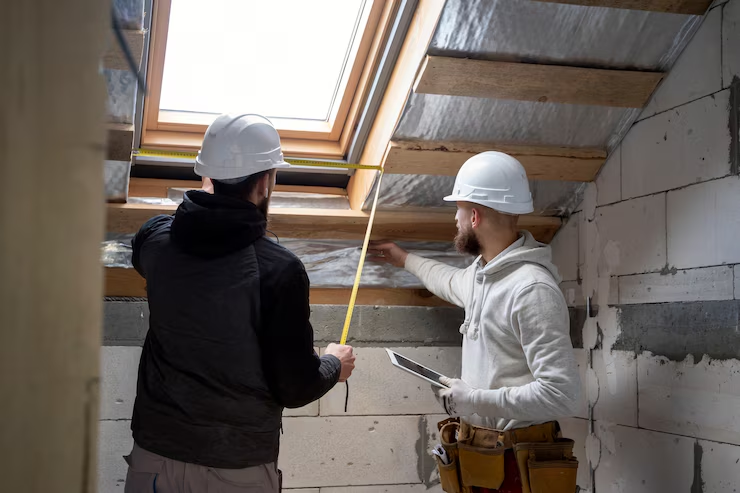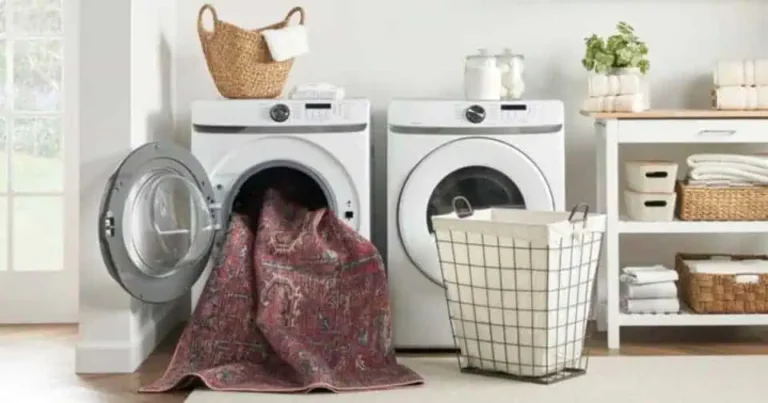
Wall Vent is a small opening in the wall that helps air move in and out of your house. It may look simple, but it plays a big role in keeping your home fresh and safe. Without a wall vent, your rooms can feel stuffy and damp.
When air doesn’t move well, it can cause problems like mold, bad smells, and hot spots. A good wall vent helps the air flow better, takes out old air, and brings in fresh air. It makes your house feel cooler in summer and warmer in winter. Let’s learn more about how a wall vent works and why it matters.
What Is a Wall Vent and Why Every Home Needs One
A wall vent is a small cover with holes that lets air move in and out of your house through the wall. It is often made of metal or plastic and placed on inside or outside walls. A wall vent may look simple, but it does an important job in your home. It keeps the air fresh and helps remove old or bad air.
When air can’t move freely, your home starts to feel hot, damp, or even smelly. Moisture builds up, which can cause mold or damage your walls. A wall vent helps stop this by letting air escape. It also pulls in fresh air from outside, making your rooms feel better.
Many people don’t know that wall vents help with temperature, too. In summer, they let hot air out. In winter, they help reduce stuffiness. This helps save money on energy bills because your fan or heater doesn’t need to work so hard. A house with good airflow feels more comfortable all year long.
How a Wall Vent Helps Keep Air Fresh and Clean
Fresh air is very important for a happy and healthy home. When a house is closed all the time, the air inside gets old and full of dust or smells. A wall vent helps to bring in clean air and push out the dirty air. This keeps the rooms feeling fresh all day long.
Many homes use fans or air coolers, but without a way to move air outside, the air just circles inside. That’s when the air feels heavy or musty. With a wall vent, the air flows in one side and out the other. This makes breathing easier, especially for people with allergies or asthma.
A wall vent also helps in places like the kitchen or bathroom. These places get wet and steamy, and that steam can turn into mold. Mold can be bad for your walls and your health. But when air moves out through the wall vent, it takes the wetness with it, keeping the space clean.
So even though you may not see it working, the wall vent is always helping. It keeps bad air out, brings fresh air in, and protects you and your home. It’s a small thing, but it does a big job.
Top Benefits of Installing a Wall Vent in Your Room
Installing a wall vent can make a big difference in how your home feels every day. One of the best things it does is help with airflow. Good airflow makes your house feel cooler in summer and warmer in winter without using too much energy.
Another big benefit is how it fights moisture. If there is no way for air to move out, water can stay in the walls or ceiling. This can cause damage or make paint peel. A wall vent helps air and moisture escape, which keeps your walls safe and dry.
Wall vents can also help your health. Fresh air lowers the chance of coughs, colds, or headaches from breathing old, stale air. It’s like giving your house a breath of fresh air every time it needs it.
In short, a wall vent makes your room feel better, protects your house, and helps you breathe clean air. It’s a smart, simple tool that gives long-term comfort.
Different Types of Wall Vents You Can Use at Home
Wall vents come in many shapes, sizes, and styles. Some are made of plastic, while others are metal. You can pick one that looks nice with your home and still works well. Some vents open and close with a flap, while others are always open for airflow.
There are also vents for inside walls and outside walls. Inside wall vents help air move from room to room. Outside wall vents let air go in or out of the house. Some people even use wall vents with fans for more powerful airflow.
Another type is the dryer vent, which connects to your laundry machine. This vent pushes hot air and lint outside so your house stays safe and dry. Each type of wall vent has a job, and picking the right one makes a big difference.
When choosing a vent, think about what you need: fresh air, dry air, or clean air. There’s a wall vent for each of those needs. Ask a pro or check the labels to find the best one for your room.
Easy Steps to Install a Wall Vent by Yourself
Putting in a wall vent can be easy if you follow the right steps. First, you need to choose the spot where you want fresh air to come in or go out. Most people pick a place high on the wall or near a fan. Make sure the wall is safe to cut and has no wires or pipes inside.
Next, you will need tools like a pencil, a drill, a saw, and screws. Use the vent as a guide and draw a line around it. Then carefully cut the hole. After that, slide the wall vent into place and screw it down tight so no air can leak around the edges.
If it’s an outside wall, you may also want to seal around the vent with waterproof caulk. This helps stop rain or bugs from getting in. Inside wall vents usually don’t need sealing, but make sure they’re firm and snug.
Take your time and follow instructions. Installing a wall vent is a fun DIY project that helps your home feel fresher and work better.
Wall Vent Maintenance: Keep It Working Like New
A wall vent needs cleaning now and then to work well. Dust, dirt, and cobwebs can block the holes and stop air from moving. If that happens, the vent won’t help your home as it should. Cleaning it every few months is a good idea.
Start by taking off the cover. Use a soft brush or a vacuum to clean out the dust. If there is sticky stuff or mold, wash it with warm soapy water and let it dry. This keeps the vent looking clean and smelling nice.
Check if the screws are still tight and if there are any cracks in the vent. If the vent looks broken or old, it might be time to get a new one. A damaged vent can’t move air properly and may even let bugs in.
Keeping your wall vent clean helps your house stay healthy. It only takes a little time but gives a lot of fresh air in return.
Wall Vent vs Roof Vent: What’s the Difference?
Some people think wall vents and roof vents do the same thing, but they are a little different. A wall vent goes on the side wall of your home. A roof vent goes on top of the house. Both help with airflow, but they work in different ways.
Wall vents are great for letting air in or out through the side of a room. Roof vents are mostly used to push hot air out from the attic. If your attic gets too hot, a roof vent helps cool it down so your house stays cooler.
Roof vents need special care to stop leaks, but wall vents are easier to check and clean. Both types are helpful, but they are used in different places for different reasons.
So if you want better airflow in a room, a wall vent is best. If you need to cool your attic, then a roof vent is a better choice. Both work together to keep your house comfy.
Best Places in Your House to Put a Wall Vent
Choosing the right spot for your wall vent is very important. If it’s not in the best place, the air may not move well. The good news is, many rooms in your house can use a wall vent. It depends on what you need it for.
Rooms like kitchens and bathrooms need wall vents the most. These rooms get wet and hot quickly. A vent helps move out steam and smells. Living rooms and bedrooms can also use wall vents to keep the air fresh and moving.
If your room feels stuffy or warm all the time, that’s a sign it may need better airflow. A wall vent near the ceiling works best because warm air rises. It also helps to place it across from a window or fan to move air better.
Places to Put Wall Vents in the Home:
- Kitchen walls (to remove steam and smells)
- Bathroom walls (to get rid of moisture)
- Living room (to keep air flowing)
- Bedrooms (for better sleep and air)
- Laundry room (to remove heat and wet air)
Think about what the room needs and pick a spot that helps air move easily.
Common Wall Vent Problems and How to Fix Them
Sometimes, a wall vent can stop working well. This can be because of dust, broken parts, or poor airflow. It’s good to know the signs early so you can fix them and keep the air fresh in your home.
One problem is a blocked vent. Dust, leaves, or spider webs can stop air from going in or out. Another issue is loose screws or cracks around the vent that let bugs or rain in. Some vents also make noise when air moves too fast through them.
If you see any of these signs, it’s time to check your wall vent. Use a screwdriver to take off the cover and look inside. If it’s dirty, clean it with a vacuum or soft cloth. If parts are broken, you may need to replace the whole vent.
How to Fix Common Wall Vent Problems:
- Dusty vent? Clean with a brush or vacuum.
- Loose parts? Tighten screws with a screwdriver.
- Broken cover? Replace with a new one.
- No airflow? Check both sides of the wall for blocks.
Fixing a wall vent is simple and can make your home feel fresh again in no time.
Conclusion
A wall vent may look small, but it does a big job in your home. It helps air move in and out, so your rooms feel fresh and clean. It also keeps away bad smells, hot air, and wet air. This makes your home safer and more comfy.
If you don’t have a wall vent yet, it’s a good time to think about getting one. It’s easy to install, simple to clean, and very helpful every day. Your home and your family will be happier with better air inside. Fresh air is always a good thing!
FAQs
Q: What is a wall vent?
A: A wall vent is a small cover in the wall that helps air move in and out of a room.
Q: Why do I need a wall vent?
A: It keeps the air fresh, removes smells, and stops wet air from building up.
Q: Can I install a wall vent by myself?
A: Yes! With simple tools and care, many people can install it themselves.
Q: How often should I clean my wall vent?
A: Clean it every few months to stop dust and dirt from blocking the air.
Q: Is a wall vent better than a roof vent?
A: Both are good. Wall vents help rooms, while roof vents are for the attic.


